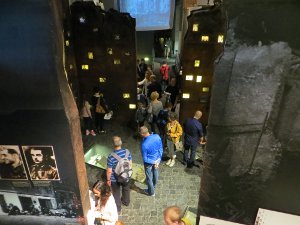Sights and Activities
Below are the places we saw and activities completed while visiting Poland:
Pszczyna
Our friends took us to this lovely town located in southern Poland for a pleasant walk around the old town square and to visit the Castle. It was constructed as a castle in 13th century or earlier, in a gothic style and rebuilt in a renaissance style in the 17th century. During the course of the 18th and 19th centuries, the exterior of the castle was partially changed into a baroque-classic style.

Oświęcim
State Museum Auschwitz – Birkenau: just recalling our visit sends shivers down our spine, few place names have had more of an impact on us than Auschwitz. This is the location of history’s most extensive experiment in genocide. Established within disused army barracks in 1940, Auschwitz was expanded into the largest center for the extermination of European Jews. Two more camps were subsequently established nearby: Birkenau, also known as Auschwitz II, and Monowitz. In the course of their operation, between one and 1.5 million people were murdered in these death factories. We entered some of the original buildings where, now, the state museum is housed. Please read more about our experience in our article.

Wieliczka
Wieliczka Salt Mine: located in southern Poland, the mine, built in the 13th century, produced table salt continuously until 2007, as one of the world’s oldest salt mines still in operation. We took a 2-hour tour to see a portion of the mine that attractions included dozens of statues, three chapels, and an entire cathedral that all have been carved out of the rock salt by the miners. The mine is one of Poland’s official national Historic Monuments.
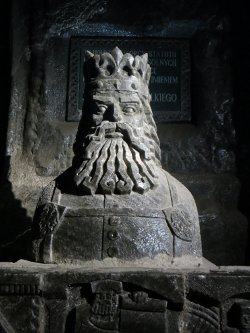
Krakow
Wawel Castle: this gothic castle was built at the request of Casimir III the Great, who reigned from 1333 to 1370, and consists of a number of structures situated around a central courtyard. In the 14th century it was rebuilt by Jogaila and Jadwiga during their reign. For centuries, the residence of the kings of Poland and the symbol of Polish statehood, the Castle is now one of the country’s premier art museums.
Wawel Cathedral: a Roman Catholic Church more than 900 years old. Karol Wojtyla, who in 1978 became Pope John Paul II, was ordained to the priesthood here on All Saints Day, November 1, 1946. The current, Gothic Cathedral, is the third edifice on this site: the first was constructed and destroyed in the 11th century; the second one, constructed in the 12th century and was destroyed by a fire in 1305. The construction of the current one began in the 14th century on the orders of Bishop Nanker. We found the mix of structures very interesting.
Main Market Square: this giant square is the focus of the Old Town, and is Europe’s largest medieval town square.
St. Mary’s Church: this 14th-century church is located on the northeast corner of Main Market Square.
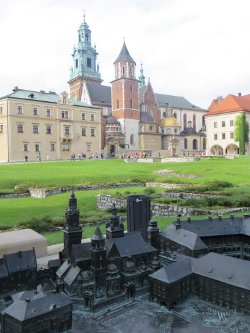
Florian Gate: this 14th century gate is part of the old city walls and a very popular gathering point.


Warsaw
Castle Square: this is the main gateway to the Old Town and houses a monument to Sigismund III Vasa, who moved the capital of Poland from Kraków to Warsaw in 1596.
Royal Castle: located in the Castle Square, it was the official residence of the Polish monarchs. In the 19th century, after the collapse of the November Uprising, it was used as an administrative center by the Tsar. Between 1926 and World War II the palace was the seat of the Polish president, Ignacy Mościcki. After the devastation done by Nazis during the Warsaw Uprising, the Castle was rebuilt and reconstructed. In 1980, the castle, together with the Old Town was registered as a UNESCO World Heritage Site.
Barbican Fort: a magnificent fortified section of the medieval city walls.
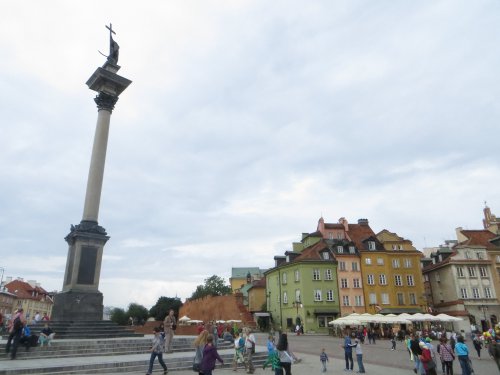
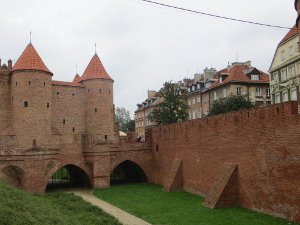
Historical Museum of Warsaw: the museum was closed, but we watched a short film on the history of the city, from its days of being called the Paris of Central Europe to the 85% destruction of the city and the reconstruction of it.
Warsaw Rising Museum: this museum commemorates Warsaw’s insurrection against its Nazi occupiers in 1944, which ended in the destruction of much of the city and its population. We were moved by the tragic story which was very well displayed via photographs, exhibits, and audiovisual displays.
Ghetto Heroes Monument: this monument is located on a site where a Jewish ghetto was established by the Nazis and remembers its victims via pictorial plaques.
